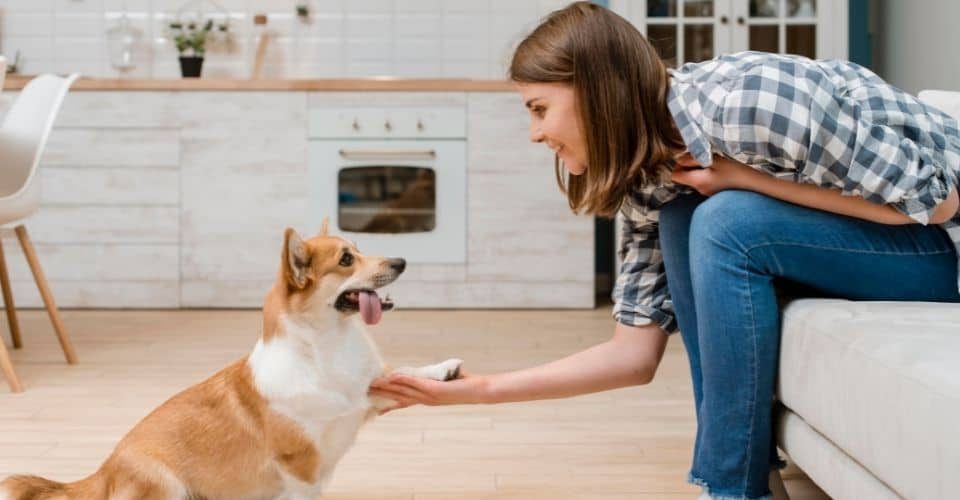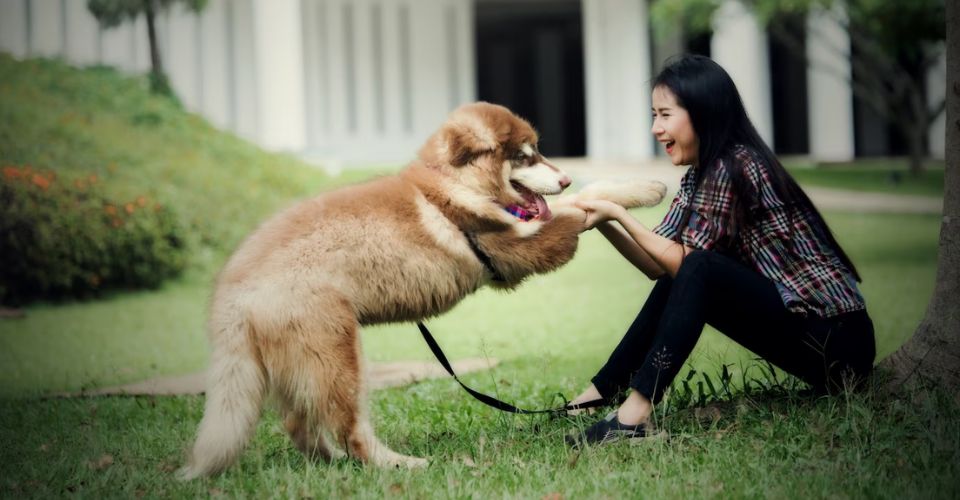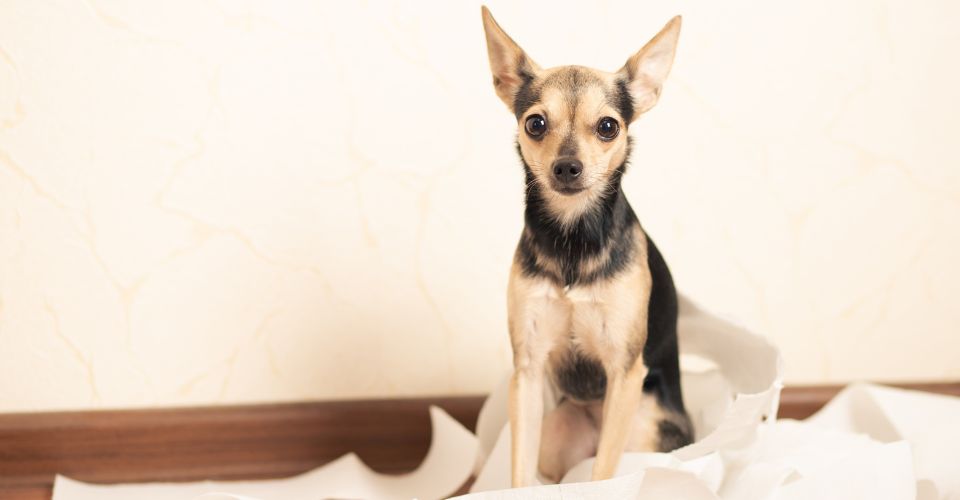Training dogs to follow your commands is mostly achieved using yummy treats. But after some time, your dog won’t listen without treats unless you give him his favorite treat. But this cannot go for long—you will have to train your dog without treats.
You might be facing the same issue right now. When you adopted your dog, be it some Golden Retriever, Chow Chow, or an adorable mix of Yorkie, the first thing you want him to do is to waggle his tail when he sees you. Or follow your commands of ‘Fetch, Sit, Roll’ and also not get distracted by other things—without the use of rewarding treats.
Getting your dog off the treat is very important. If your dog leans on treats then it not only gets tough for the owner to entertain him every time but can also prevent the formation of a connection and bonding.
However, developing a deep understanding and training your dog to obey you without any reward could be a bit tricky. Can you train your dog without treats? That is what we will explore in this article. Below, we have gathered the 6 most recommended ways for positive dog training without treats.
6 Ways to Trains Your Dog Without Treats
1. Understanding Your Dog
The foremost important thing that a dog trainer does while training is to understand the nature of the dog. You should know that the nature of a dog varies based on its behavior, breed, and age. Some dogs can be really stubborn while others can be quite submissive and quiet.
Just follow up on their daily patterns and see how they respond to different situations. The best thing about dogs is that in comparison to cats, dogs are easy-going fellas. It wouldn’t take long to acquaint yourself with your dog.
For example, a really stubborn and angry dog wouldn’t bother listening to you at all. While a personable dog can understand your little gestures or even your expressions real quick. From this, you’d be able to know how much time would it take to get your dog to obey you without rewards and treats.
Experts also advise that before adopting a dog you should check its previous history too. Why? Because, how it has been treated by the previous owner affects its overall temperament, psychology, and behavior. If it is not treated the way it should have been, your approach will be different than if it was treated with more love. Thus, training them without treats may require more empathy—and, of course, time.
However, if you still feel that you are unable to figure out the history of your new buddy, contact a professional dog trainer to help you how to get your dog to listen without treats.
While trying to understand your dog, you should know that even though dogs are smart and loving, but also sensitive. You have to get to know each of these factors before you dive into training your dog without treats.
2. Be Patient When You Train Your Dog Without Treats
If you bring a new dog to your house, you should know that dogs take some time to adapt to their new homes. Experts have written that a dog owner needs to understand that most of the thinking styles of a dog are like that of humans.
You might have noticed that when you move to a new place, at first you feel a little sad and nostalgic. This depends on your nature and how long you sit well with the situation.
The same is the case with your new companion. Dogs when brought to a new home do feel a little sad and nostalgic for a couple of days.
So, the point being, when you start training your dog, first get him used to the environment. This would not only lighten up his mood, but he’d also follow your commands without looking for any yummy treat in return. According to studies, it takes almost 4 to 6 months to train a new puppy—for an adult dog, it depends on the age and breed of the dog.
With every dog, you have to start training with treats, and carefully, start decreasing the amount. Dogs take some time for adapting to the environment and familiarizing themselves with the new owner, so have patience!
3. Praise and Appreciate Your Dog
As said earlier, initially all the dogs are trained using treats, and then gradually, the number of treats is decreased to create a treat-free puppy training routine. However, with the number of treats decreasing, the amount of appreciation should increase.
For example, if your pooch successfully fetches the frisbee, you should praise him a little extra while giving him bits of treat. Experts call this method a “Lottery System”.
Again, it is to remind you that dogs think like humans. Most of the time, appreciation means more than a material thing. After a week or two, your dog would be more interested in your appreciation and less in those treats.
Thus, whenever your buddy brings you something back or obeys you, shower him with love, snuggling, and some back-scratching. And if, during the training, the distraction is stronger such as flying butterflies, bicyclists, crying children, etc. you should scale up the amount of appreciation as well.
4. Train Your Dog With Love
Last but not least, if you want an honest and loyal doggie just like Cinderella’s Bruno, you’d have to treat him like Cinderella did! Be loving and affectionate to your pet, and get him attached to you and not to the material things. Following such behavior, there is a greater tendency that you’d quickly reach the goal of training a dog to heel without treats.
If you are rude to your little guy and then you want him to train without the treat, that’s not going to happen. So, then you’d be saying that my dog only comes to me when I have food.
It’s often said that punishment can make your dog more loyal and close to you. But you should know that in any matter of life, even if it’s with the dogs, you can’t get love by giving hate. For training a dog without treats, the best way to do this is to encourage your dog to do its favorite task such as tug toys, bones, food, etc.
Physical and direct interactive punishment never helps—in fact, it does the opposite. Scold your dog and physically punish it, your dog will start ignoring you and your commands. As the VCA Hospitals puts it, “Punishment should never be used to train a pet. Pets should be taught what we want them to learn through reinforcement and shaping rather than attempting to train them what we don’t want them to do. It is illogical to wait until the pet misbehaves and then administer something unpleasant.”
All the famous dog experts such as William E. Campbell, Barbara Woodhouse, Weatherwax, etc. have strongly recommended treating your dog like your own child and being compassionate to them.
5. Early Training
“You cannot make people learn. You can only provide the right conditions for learning to happen.” This stands true, both for humans and dogs. The key to raising a well-disciplined puppy lies in early training.
If you spoil your pups with treats from day one, it is going to be hard for you to make them do something without treats in their adolescence and adulthood. Start training your puppy without treats the day you adopt him and it will help you big time in the future.
6. Use Life Rewards
Life rewards are things, other than food, that dogs love, such as toys, walks, running around the yard, and your time and attention. Understand what your dog loves in non-food activities and integrate it into your dog training regimen. For instance, if he loves playing fetch, make him follow any of the commands you want him to obey (such as rolling over). When he obeys the command, start playing with him.
This way, he would associate the playtime with good behavior.
Key Takeaways
In a nutshell, the main thing is that you should be as caring to your dog as a mother is to her child. If you want to train your doggie without treat then:
- Start by understanding the nature of your pet.
- Prepare your mind to be patient and tolerable for training your dog.
- Treat your dog well, because dogs understand the emotions.
- Praise and appreciate your pooch with loving words and caressing hands.
- Slowly decrease the number of treats and replace them with his favorite toys.
- Engage your pooch with the things that they love.
- Create an aura of attachment and affection between you and your dog.
- Make your pet get attached to you, not with the things.
- The purpose of training your dog should be to make him a friend to you, not just an obeying pet.
Hope you found this article useful. We have much more in store for dog lovers like you, especially when it comes to Dog Training. Subscribe to our newsletter and be the first one to get the latest updates, tips, and experts’ advice about dog care, feed, training, health, and wellbeing.





